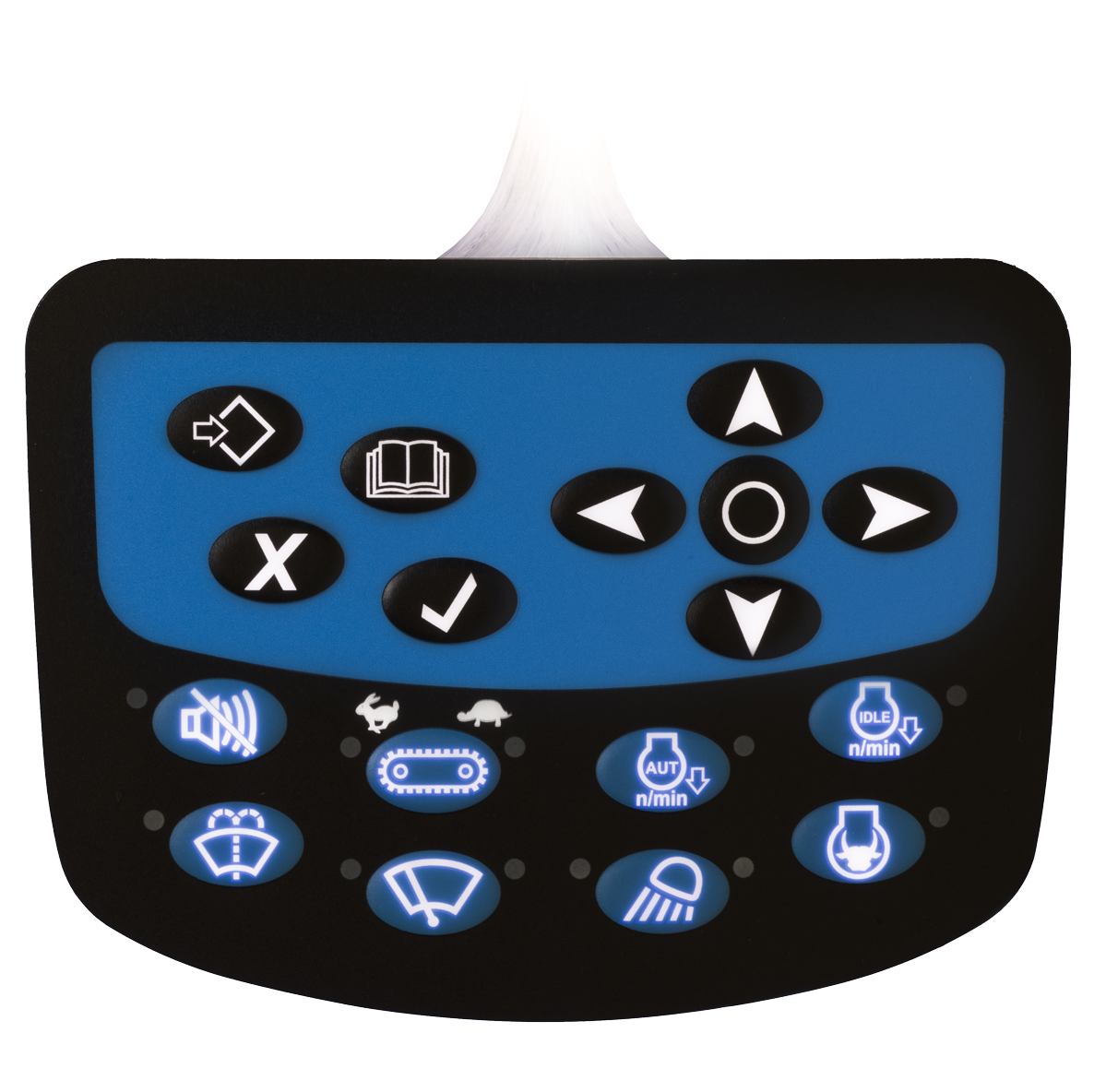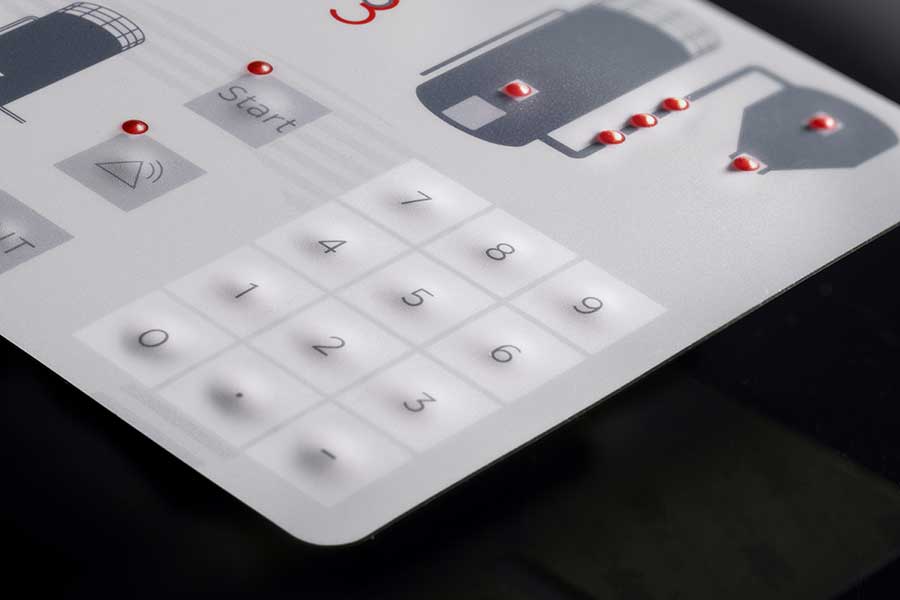How Membrane Switches Are Used to Boost Safety and Efficiency in Machinery
How Membrane Switches Are Used to Boost Safety and Efficiency in Machinery
Blog Article
Membrane Layer Switch Over Technology: The Key to Reliable and Cost-Effective Interfaces
Membrane button modern technology has become an essential element in the design of interface, providing both dependability and cost-effectiveness across a varied array of applications. Its robust construction makes certain resistance to ecological challenges, while the flexibility in layout permits for customized options that satisfy specific market demands. As we discover the complex advantages of membrane layer buttons, their capacity for development questions regarding future applications and advancing fads. What does the next chapter hold for this innovation in a progressively digital landscape?
Recognizing Membrane Layer Switch Technology
Membrane layer button technology is a commonly made use of interface remedy in numerous digital gadgets, supplying a seamless blend of capability and design. This innovation includes numerous layers of materials, normally being composed of a graphic overlay, spacer layer, and a circuit layer. The graphic overlay displays the interface elements, while the spacer layer divides the circuit layer from the overlay until a user triggers a button.
When pressure is put on the overlay, the circuit layer completes the electric circuit, sending a signal to the device. This mechanism permits different arrangements, including tactile responses and backlighting alternatives, improving customer communication. Membrane buttons are commonly made using sturdy materials such as polyester or polycarbonate, making sure durability and resistance to ecological factors like moisture and dirt.
The adaptability of membrane layer changes allows their application in varied industries, consisting of medical devices, customer electronics, and commercial controls. Their portable design permits combination into space-constrained environments, supplying an efficient interface without endangering visual charm. Comprehending the intricacies of membrane button technology is essential for makers and developers seeking to create reputable and reliable human-machine interfaces.
Secret Advantages of Membrane Buttons
While numerous user interface options exist, membrane layer changes offer unique benefits that make them a preferred selection in various applications. Among the primary benefits is their durability; membrane switches are designed to hold up against rough environmental problems, consisting of dampness, dirt, and temperature level variations, making sure long-lasting efficiency. This strength considerably reduces the requirement for regular substitutes, thereby decreasing general maintenance prices.

Furthermore, membrane layer buttons are light-weight and compact, making them suitable for applications where room is restricted. Their low-profile design adds to a smooth look without jeopardizing performance.
Cost-effectiveness is also a notable advantage, as the production process for membrane layer changes has a tendency to be more economical compared to standard mechanical buttons. This affordability, integrated with their reliability and ease of installment, positions membrane layer switches over as a practical solution for a wide variety of industries seeking reliable and reliable interface.
Applications Across Numerous Industries
Just how do membrane buttons adjust to the diverse needs of various sectors? Membrane button technology is significantly identified for its convenience, making it appropriate for a wide variety of applications across numerous fields. In the medical field, membrane buttons are utilized in analysis tools and patient surveillance gadgets, where their sturdiness and convenience of cleaning are vital for keeping hygiene criteria. The automobile market uses these buttons in dashboards and control board, supplying a streamlined visual while making sure easy to use operation.
In customer electronics, membrane layer buttons provide a small option for push-button controls and home appliances, enhancing user experience with intuitive design. Furthermore, the commercial industry leverages membrane layer buttons for machinery control panels, taking advantage of their resistance to harsh environments, such as dampness and dust.
Military and aerospace applications additionally utilize membrane buttons for their dependability and ability to endure severe conditions, guaranteeing operational performance in critical situations. In addition, the food and beverage sector embraces these switches for automated systems, where sanitation and convenience of procedure are extremely important. Eventually, membrane switches are customized to meet the special needs of each market, confirming their essential duty in contemporary innovation interfaces
Style and Modification Choices

In the realm of membrane layer switch innovation, style and modification alternatives play a critical function in enhancing performance and customer interaction. These switches can be tailored to fulfill details operational requirements and aesthetic choices, making them flexible parts in various applications.
Among the primary customization choices is the format of the button itself, which can be designed to suit special interface and ergonomic considerations. By readjusting look at these guys the shape, dimension, find here and setup of buttons, manufacturers can produce instinctive designs that assist in convenience of usage. Additionally, the consolidation of different colors and graphic overlays permits branding and improved visibility, guaranteeing that users can quickly determine features.
In addition, membrane switches can be engineered with numerous tactile feedback systems, such as elevated switches or audible clicks, to improve the individual experience. Different materials can likewise be selected for sturdiness and ecological resistance, attending to variables such as wetness, temperature level changes, and chemical exposure.
Inevitably, the substantial layout and personalization alternatives available in membrane switch innovation equip companies to create customized solutions that not only satisfy useful requirements but likewise line up with their branding and functional demands.

Future Fads in Membrane Switches
As membrane layer switch technology proceeds to develop, future trends are increasingly focused on enhancing individual experience and incorporating sophisticated capabilities. One substantial pattern is the integration of touch-sensitive and capacitive technologies into conventional membrane layer switches. This development enables even more user-friendly interface, providing tactile comments while keeping a smooth layout.
An additional emerging fad is making use of ecologically pleasant materials, driven by the growing demand for lasting manufacturing techniques. Producers are seeking to minimize their carbon footprint by using recyclable substrates and low-impact inks, lining up with worldwide sustainability objectives.
Additionally, the rise of the Net of Things (IoT) is prompting the incorporation of wise features into membrane layer switches. Boosted connection options will certainly allow gadgets to connect with each various other, permitting seamless assimilation into more comprehensive systems.
Additionally, improvements in printing innovations, such as electronic printing, are enabling higher layout adaptability and personalization. This allows suppliers to create intricate styles and dynamic colors cost-effectively.

Conclusion
Finally, membrane switch technology represents a vital technology in interface style, Look At This supplying considerable benefits in longevity, modification, and cost-effectiveness. Its extensive applicability across diverse sectors underscores its importance in contemporary innovation. As improvements proceed to arise, especially in touch-sensitive interfaces and sustainable materials, the potential for membrane changes to enhance individual experience and performance remains promising. Continued expedition of this innovation will likely yield further improvements and broaden its range in future applications.
Report this page